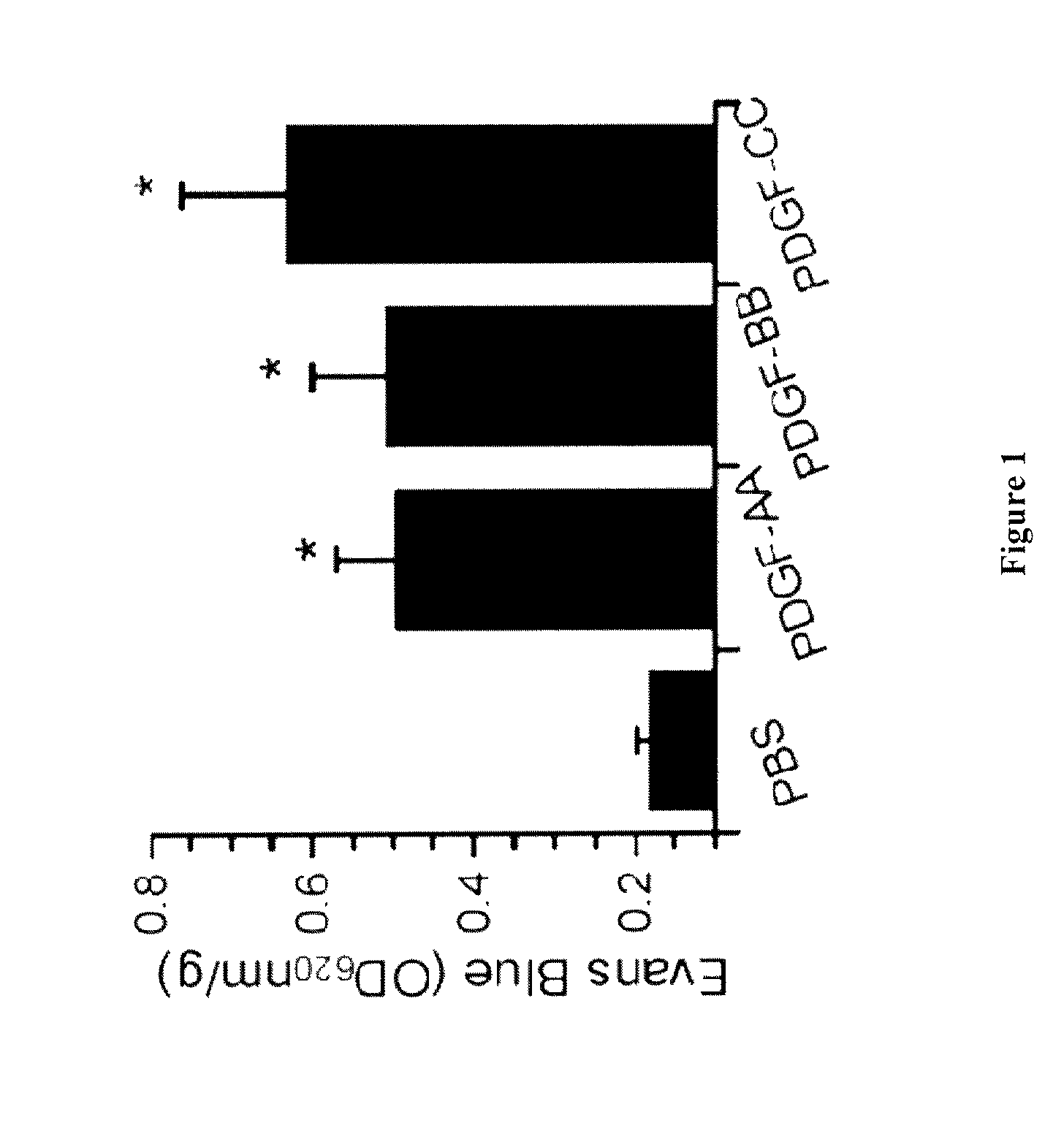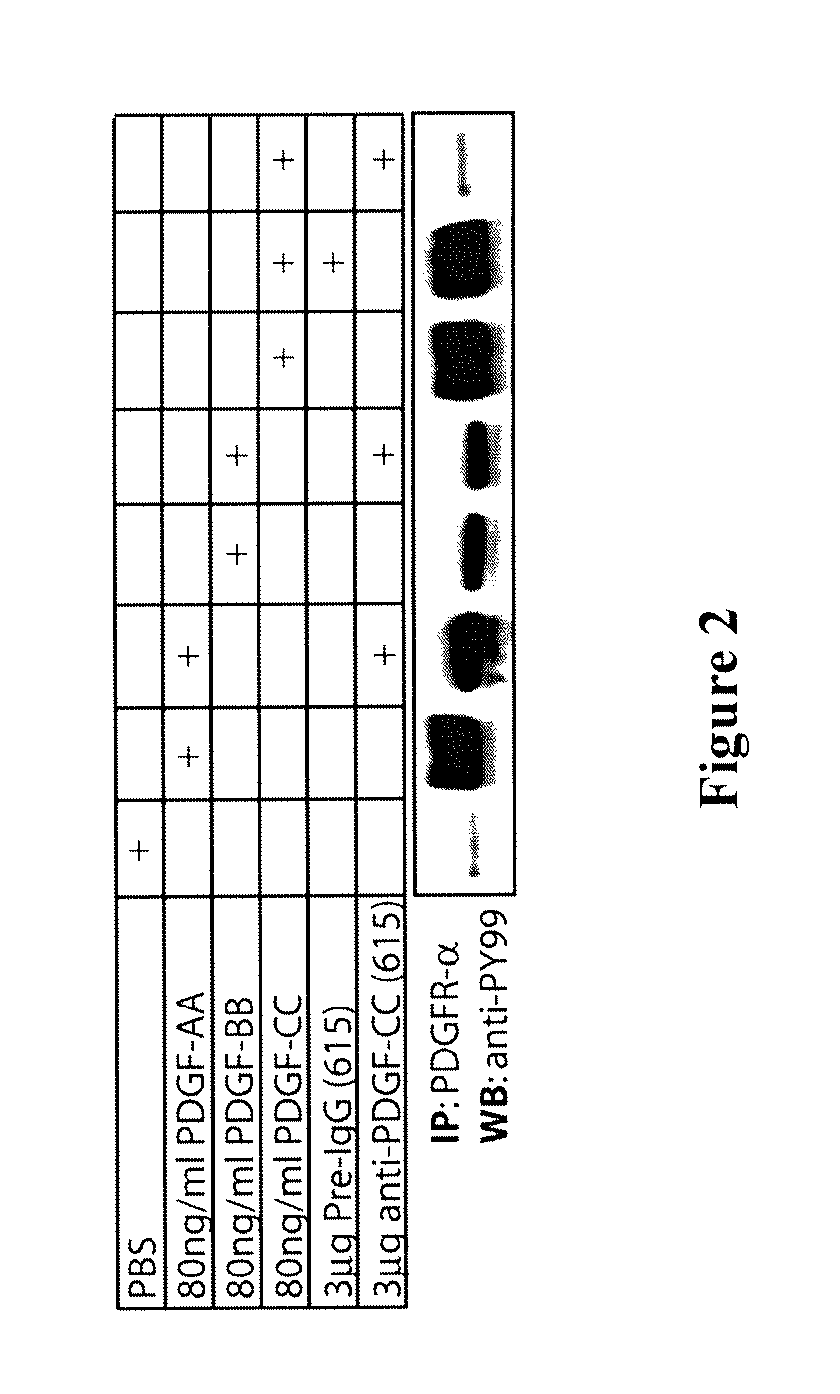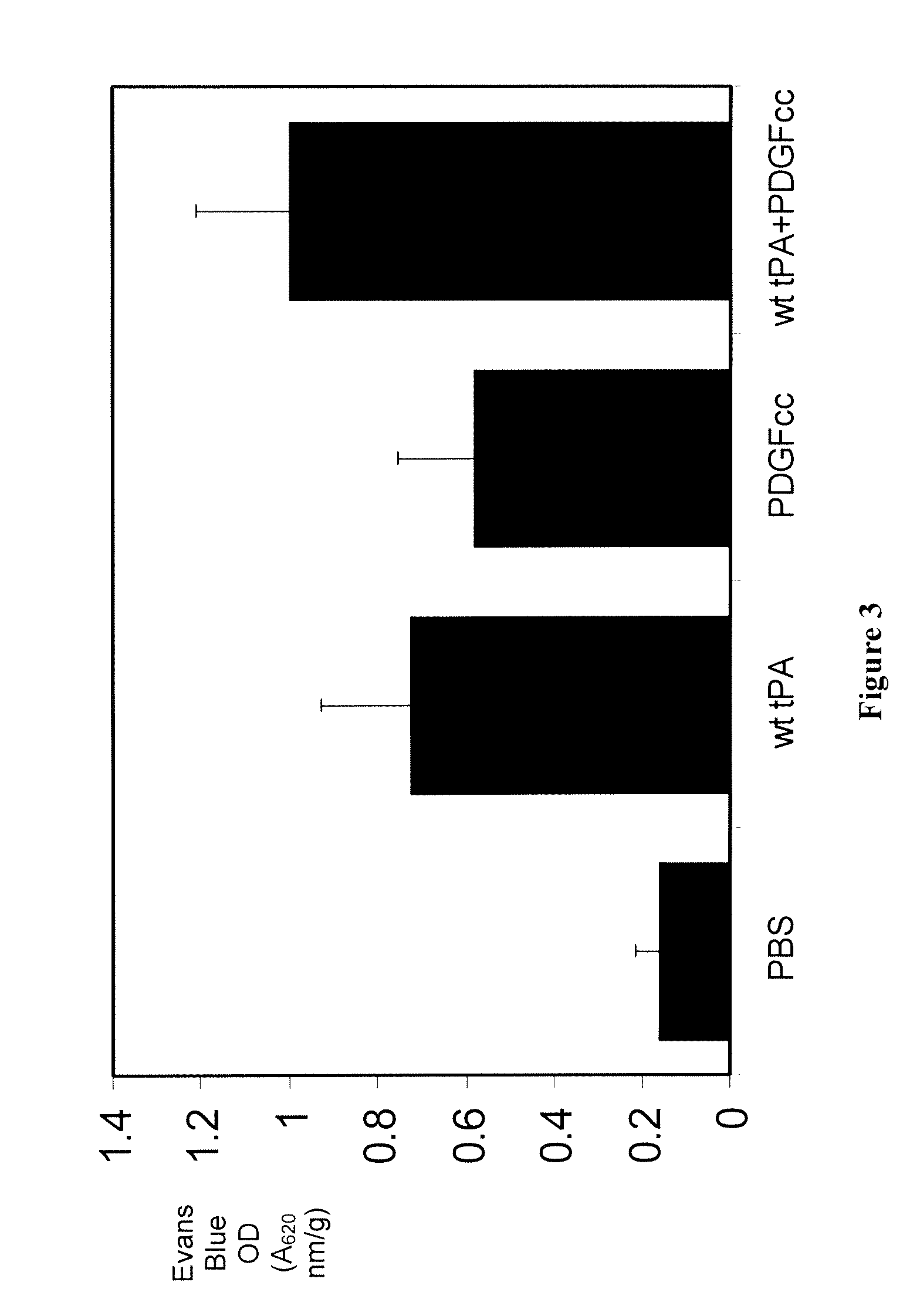Methods and compositions for modulation of blood-neural barrier
a blood-neural barrier and composition technology, applied in the field of methods and compositions for modulating blood-neural barrier (bnb), can solve the problems of severe side effects of tpa, and achieve the effect of increasing the permeability of the blood-neural barrier
- Summary
- Abstract
- Description
- Claims
- Application Information
AI Technical Summary
Benefits of technology
Problems solved by technology
Method used
Image
Examples
example 1
PDGF-AA, PDGF-BB and PDGF-CC Induce Brain Edema Following Intraventricular Injection
[0148]Wild type C57BL6 mice (10 Week old) were injected intraventricularly into the dorsal third ventricle with 2 μl of PBS, active PDGF-AA, PDGF-BB (both from Preprotech Inc.) and PDGF-CC (see below) (3 μM). Evans Blue was given intravenously immediately after the injection. One hour after the injection, the animals were perfused with PBS and the brain tissue was removed and processed for Evans Blue extravasation.
[0149]As shown in FIG. 1, all three PDGFs, in the CSF, are potent inducers of opening of the BBB.
example 2
Anti-PDGF-CC Antibodies Blocked PDGF-CC Mediated Activation of PDGFR-α
[0150]To monitor growth factor-induced tyrosine phosphorylation of PDGFR-a, serum-starved porcine aortic endothelial (PAE) cells with stable expressing of human PDGFR-α were incubated on ice with 80 μg / ml PDGF-AA, PDGF-BB, or activated PDGF-CC core protein, respectively. The growth factors had prior to addition to the cells been incubated with 3 μg of affinity-purified rabbit polyclonal antibodies against PDGF-CC (rabbit no. 615), or with 3 μg of preimmune rabbit IgG from the same rabbit. The cells were lysed as previously described (Li et al. 2000, Nat. Cell Biol. 2:302-309) and PDGFR-α was immunoprecipitated using a specific antiserum (Eriksson et al. 1992, EMBO J. 11:543-550). Precipitated proteins were subjected to SDS-PAGE under reducing conditions. Tyrosine phosphorylated PDGFR-α was detected by immunoblotting using anti-phosphotyrosine antibodies (PY99, Santa Cruz)
[0151]To determine the neutralizing activit...
example 3
Both tPA and PDGF-CC Open the Blood Brain Barrier
[0152]Wild type C57BL6 mice (10 Week old) were injected intraventricularly into the dorsal third ventricle with 2 μl of either PBS, wild type murine tPA (3 μM), active PDGF-CC (3 μM), or wild type murine tPA (3 μM) plus active PDGF-CC (3 μM). Evans Blue was given intravenously immediately after the injection. One hour after the injection, the animals were perfused with PBS and the brain tissue was removed and processed for Evans Blue extravasation.
[0153]As shown in FIG. 3, tPA, as well as PDGF-CC in the CSF, are potent inducers of opening of the BBB. However, tPA together with PDGF-CC did not significantly increase BBB opening, suggesting that both tPA and PDGF-CC are able to open the BBB, but the effects are not synergistic or additive.
PUM
| Property | Measurement | Unit |
|---|---|---|
| molecular weight | aaaaa | aaaaa |
| permeability | aaaaa | aaaaa |
| solubility | aaaaa | aaaaa |
Abstract
Description
Claims
Application Information
 Login to View More
Login to View More - R&D
- Intellectual Property
- Life Sciences
- Materials
- Tech Scout
- Unparalleled Data Quality
- Higher Quality Content
- 60% Fewer Hallucinations
Browse by: Latest US Patents, China's latest patents, Technical Efficacy Thesaurus, Application Domain, Technology Topic, Popular Technical Reports.
© 2025 PatSnap. All rights reserved.Legal|Privacy policy|Modern Slavery Act Transparency Statement|Sitemap|About US| Contact US: help@patsnap.com



